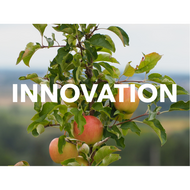
(View Complete Item Description)
Food waste is a major contributor to greenhouse gas. Wasted food and the resources to produce that food are responsible for approximately 8% of global greenhouse gas emissions. In this storyline, students learn about the resources required to produce food through following the carbon cycle and discover how food waste contributes to climate change. They will also learn the farm to table transport chain as well as how to conduct a food waste assessment. Finally, the students will research solutions to the problem of food waste and, as a final project, present one solution that they have thoroughly researched that can be applicable to their community. For CTE teachers, this storyline provides the basic knowledge needed to develop a deep understanding of WHY reducing food waste is an important solution to climate change. There are several potential extensions that Family Consumer Science teachers can utilize as well as Ag teachers and even Business teachers. There is a partial list at the end of the learning progressions.
Material Type:
Unit of Study
Authors:
Hattie Osborne,
Pacific Education Institute




















